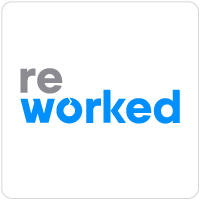2018 Workplace Collaboration Trends
In today’s increasingly competitive marketplace, companies must do anything and everything to stay alive. So what causes these workplace failures? 86% of executives, educators, and employees say that they’ve seen poor workplace collaboration cause a workplace failure. Almost 40% of Millenials feel that their organization doesn’t collaborate enough, and with Millenials moving into leadership and management positions in the workforce, it’s time to pay attention to the workplace collaboration trends that are going to have the greatest impact in 2018.
Workplace Collaboration Trends and the Gig Economy
33% of the US workforce – some 55 million people – are freelancing. Some researchers expect that more than half of the US workforce will be freelance in the next five years. With freelancing set to add more than $715 billion to the US economy this year, it’s clear that freelance and gig work is going to continue to expand.
In addition to “gig” work, remote work options are increasing, too. 42% of Americans report that they spend at least some time working remotely, and options like telecommuting (full and partial), remote work arrangements, and flexible schedules are on the rise.
A tight market for qualified candidates is also helping to increase the need for flexible job options. In 2017, 32% of survey respondents said that they have quit a job due to a lack of flexibility. Remote companies (or mostly remote companies) have more women in leadership. In addition to boosting retention and diversity, remote or flexible work arrangements boost productivity, increase efficiency, reduce employee stress, save money and increase employee engagement.
We know that workplaces are changing, but how does this influence workplace collaboration trends?
Where companies are using remote and freelance workers, the need for communication and collaboration increases. Informal conversations that used to encourage collaborative thought don’t happen as frequently when team members are separated by three time zones. For this reason, one of the biggest workplace collaboration tools of 2018 will be the rise of workplace messaging software, cloud-based storage, and cloud-based project management tools.
Virtual Reality and Augmented Reality
Most of us think of VR/AR as something fun, maybe a little gimmicky, and something entertaining. Right now, VR/AR is used extensively in consumer-facing applications, especially in video games, but Goldman Sachs believes that the future of VR/AR is in enterprise and public sector applications.
One of the biggest obstacles for off-site employees is the isolation. Virtual and augmented reality programs like DORA and AltSpaceVR allow workers all over the world to virtually experience the conference room.
While VR/AR is still evolving, it could be used in the future to help people do just about anything. If it can be done in the physical world, it could be done through virtual/augmented reality. Imagine doctors sending a virtual reality MRI to a colleague for a real-time consult, engineers manipulating 3D design schematics with colleagues or clients overseas, realtors using augmented reality to demonstrate what a house will look like with all the finishes and furniture, and educators using VR and AR to help their students get hands-on experience with something they’re learning about.
Virtual reality and augmented reality will allow people to actually EXPERIENCE something that may be thousands of miles away. As the technology continues to develop and become more cost-effective, it’s going to become a workplace collaboration trend to watch in 2018 and beyond.
Artificial Intelligence and Machine Learning
Sometimes, you don’t want the “personal touch”. Sometimes, the “personal touch” is just inefficient. Artificial intelligence and machine learning will be workplace collaboration trends to watch in 2018.
Artificial intelligence is already being used in many companies. Chatbots can answer questions about pay and benefits, freeing up the human resources department to deal with the issues that DO demand a personal touch. Machines can serve as an augment to our memories, learning how to help us store and retrieve information quickly. We can use AI and machine learning to help the computers understand a process or system and take care of the “drudge work” quickly.
AI-powered virtual assistants can help boost productivity and give workers an edge, facilitating more rapid and efficient collaboration among workers all over the world. As machine learning makes AI more effective, we can expect to see AI crop up more frequently on lists of workplace collaboration trends to watch.
What’s next for workplace collaboration trends?
The rise of flexible work arrangements and remote offices has been growing consistently for many years; it’s unlikely that these workplace collaboration trends will disappear any time soon. While virtual reality and augmented reality are still new to the enterprise space, they do have the potential to become a common workplace collaboration trend for many years to come. As machine learning, voice recognition, and artificial intelligence gets smarter, AI will become a workplace collaboration trend to watch. Workers will be collaborating directly with AI, and AI will be making collaborations more efficient and timely in the future.

